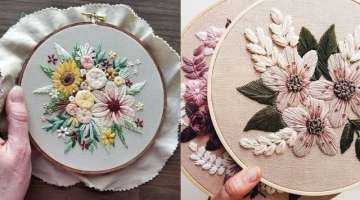Meet The Happiest Animals On Earth Named Quokkas
Everyone meet quokkas the happiest animal on world, there wasn’t many people outside of Australia to hear about those cute little animals, but it turned out the quokkas became an internet sensation.The quokkas live in clans and they fed themselves predominately with plants. A large part of their population lives on the Rottnest Island. There are around 12,000 individuals and less than 14,000 all over Australia.
- 1 | 9

You have most probably already seen a photo of a quokka floating around the internet - cue the 'quokka selfie'. This animal's peculiarity is that its smile can make even the stoniest heart melt. And we can see why. Quokkas come from the same family as the kangaroo (called the Macropodidae). They were once found on mainland Western Australia but are now mostly found offshore on Rottnest Island (near Perth) and Bald Island (near Albany). However, there are still a few isolated groups inhabiting the bushland that surround the city of Perth and the mainland.
- 2 | 9

History of the quokka Quokkas were first spotted in 1658 when a Dutchman named Volkerson said that they resembled an Asian civet cat, but with brown fur. He was the first European to record the sighting of a quokka. In 1696, Dutchman Willem de Vlamingh also discovered the quokkas and described them as large rats. He named the 19km square island just of the coast of Perth, "Ratte nest" which translated from Dutch to mean "rat's nest". As time went by, the island became known as 'Rottnest'.
- 3 | 9

A quokka's diet Quokkas are nocturnal, meaning that they primarily feed at night. They are herbivores and like to eat the leaves, stems, grass and bark off many plants. When quokkas eat, they don't chew their food immediately after biting it. They usually just take chunks off of their food, stuff it in their mouths and swallow! They then regurgitate the food, chew it thoroughly and then swallow it for the final time.
- 4 | 9

Quokkas get most of their water from their food and can survive months without drinking at all. They store fat in their tails just in case of hard times where finding food could become difficult. If you happen to be on Rottnest Island, you're bound to see quokkas can stealing human food from stores, especially when they are fed by tourists and become accustomed to new tastes. However, remember that feeding the quokkas is not allowed, as human food is unhealthy for these little cuties.
- 5 | 9

Quokka characteristics Quokkas are one of the smallest macropod species in the world, but look a lot like other wallabies. Fully grown, they are roughly the size of a small domestic cat and weigh from 2.5 to 5 kilos and measures between 40 to 54 centimeters in length. Their fur is short, grey-brown, coarse and covers most of their bodies with lighter fur on their tummy. Along with their rounded bodies, they have a black nose, black eyes, a short broad face with rounded furry ears and a short, barely-furred tail. Quokkas have short forelimbs and five clawed fingers that are great for pulling down branches, fighting, climbing, and grooming, while their hind legs are used for hopping. They are able to climb trees and shrubs for their food and they create paths and trails that they use as runways for feeding or to escape from predators. Like kangaroos and wallabies, the female quokka raises its offspring in a pouch. Their life expectancy is about 10 years, but unfortunately, they are classed as an endangered species due to habitat loss, attacks from foxes and feral cats, and climate change.
- 6 | 9

Quokka's habitat Within their isolated environments, quokkas occupy a number of different habitats. They can be found in moist and dense streamside vegetation, in shrubland and heath areas, usually around swamps. They usually live in family groups from around 20 to 150 quokkas, dominated by a male. Quokkas prefer a warm climate but are also adapted to some changes in the weather. Now predominantly based in protected island environments, quokkas are free to live peacefully, away from predators.
- 7 | 9

Quokka's personality Quokkas are known as the world's happiest animal because of their smile! It looks like they are saying cheese to the camera when you take a photo with them. It may just look like they are happy all of the time, but the smiling is actually an evolutionary feature that helps them to pant and cool off. These friendy, inquisitive animals and don't usually have a fear of humans. However, this lack of fear can be dangerous for them, as they can become sick when eating human food or can contract illnesses from people. The best place to see and potentially interact with quokkas is in zoos, including, Taronga Zoo, Perth Zoo, Adelaide Zoo, and Wildlife Sydney Zoo. Quokkas are mostly peaceful animals, but fights can break out from time to time, usually between the males. Even though they are docile and harmless, quokkas will respond if they are threatened, provoked or attacked. A quokka is quite capable of nipping a finger or a hand if you're not careful. Being mainly nocturnal animals, or actually crepuscular, they are most active at dawn, dusk and at night. They venture out of their dens and go out to search for food. Having said that, it is common to see quokkas out an about during the day on Rottnest island, as they think they will be fed by humans.
- 8 | 9

Keeping the quokkas safe There has recently been a huge upswing in this animal's popularity, to the point where the Australian government has had to put legislation in place to protect these cute little guys. It states that anyone who catches or feeds a quokka will receive a fine of $300 AUD. It is also illegal to handle quokkas and animal cruelty carries a maximum penalty of a $50,000 AUD fine and a five-year prison sentence.
- 9 | 9

Over recent years, large bushfires in the southern regions, including the town of Northcliffe, took out a big chunk of the quokka habitat. Before the fire, the area was inhabited by at least 500 quokkas. The bushfire took the number down to only 39. Because of the fires, the animals fled to the edges of the burned out areas. Unfortunately, predators that had learned to stalk those areas were waiting for the animals foraging for food in the bush. The quokkas couldn't hide as they normally would, and so predators became a real threat. Some good news! Since the 2015 Northcliffe fire, the quokkas have returned, and there are now at least 300 of them across the north-west fire area.
Related Galleries



















